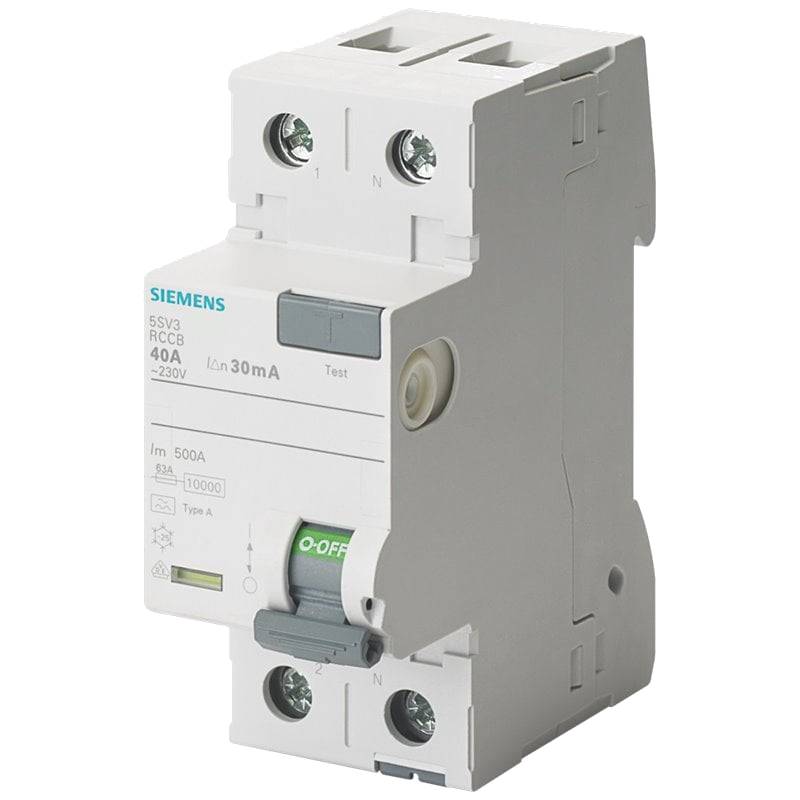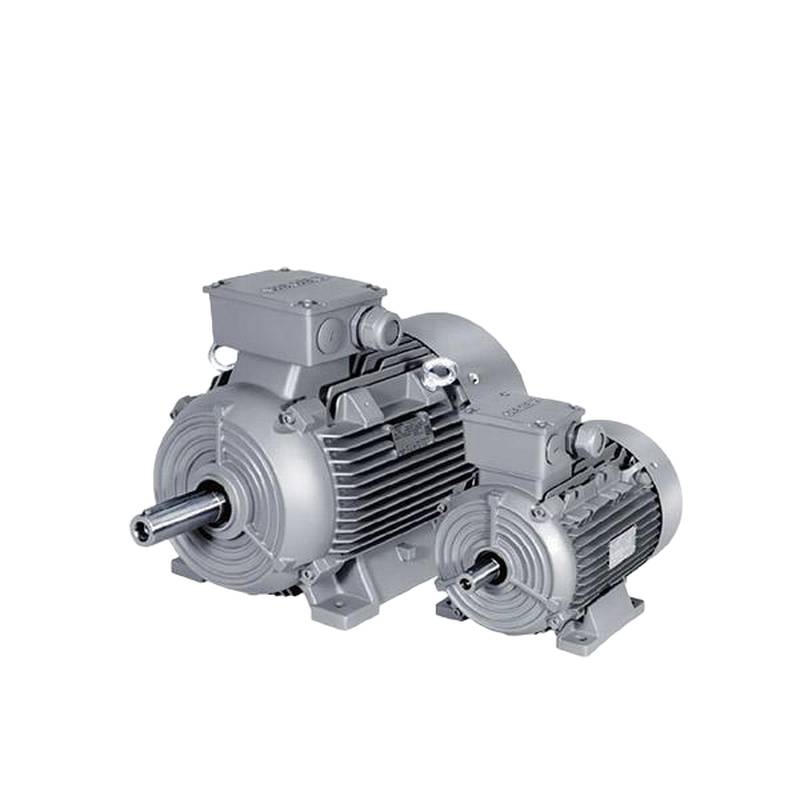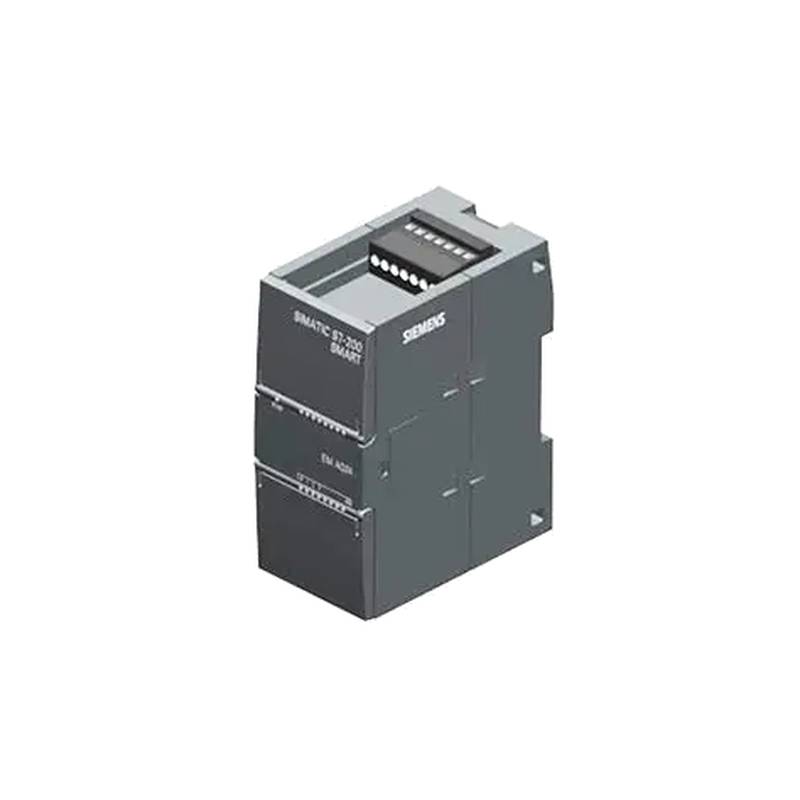
The Siemens 5SY6240-7CC is a robust three-phase circuit breaker engineered for high-load protection, offering superior reliability and safety in demanding industrial environments. This 2-pole, 40A device excels with its high breaking capacity and precise tripping characteristics, ensuring the integrity of electrical circuits against overcurrents and short circuits. Its advanced thermal-magnetic tripping mechanism provides dependable protection, making it a critical component for safeguarding sensitive equipment and personnel.
Product Specifications
| Feature | Specification |
| :---------------------- | :------------------------------------------- |
| Manufacturer | Siemens |
| Product Series | 5SY6 |
| Number of Poles | 2 |
| Rated Current (In) | 40A |
| Tripping Characteristic | C |
| Breaking Capacity (Icn) | 10 kA |
| Voltage Rating | 400V AC |
| Frequency | 50/60 Hz |
| Insulation Voltage | 500V |
| Terminal Type | Screw Terminal |
| Mounting Type | DIN Rail (35mm) |
| Protection Class | IP20 (Handle), IP40 (Enclosure) |
| Operating Temperature | -25°C to +45°C |
| Compliance Standards | IEC/EN 60898-1, IEC/EN 60947-2 |
Core Features & Market Positioning
The Siemens 5SY6240-7CC distinguishes itself in the market through its exceptional breaking capacity of 10 kA, a critical parameter for applications with high prospective fault currents. This capability ensures that the breaker can safely interrupt dangerous fault conditions, preventing widespread damage and potential hazards. The Type C tripping characteristic is specifically designed to handle moderate inrush currents from inductive loads, such as motors, without nuisance tripping, while still providing rapid protection against short circuits. This makes it a versatile solution for various industrial power distribution needs. Siemens' reputation for quality and reliability further solidifies the 5SY6240-7CC's position as a trusted choice for professionals prioritizing safety and performance.
Key Application Scenarios
This high-load protection circuit breaker is ideally suited for demanding industrial settings where reliable overcurrent protection is paramount. It serves effectively in power distribution panels for manufacturing plants, machinery control cabinets, and large commercial facilities. Applications include protecting power circuits feeding heavy-duty motors, transformers, and other inductive loads that experience significant inrush currents. Its robust design also makes it suitable for use in environments with fluctuating power demands, ensuring consistent operational safety.
Practical System Integration Guidance
Integrating the Siemens 5SY6240-7CC into existing electrical systems is straightforward due to its standard DIN rail mounting capability. For proper installation, ensure the power source is de-energized before connecting the incoming conductors to the line terminals and outgoing conductors to the load terminals. Use appropriately sized conductors and torque them to the manufacturer's recommended specifications to ensure a secure connection and prevent overheating. The terminal type is screw, facilitating direct connection with suitable cable lugs or bare wires. Always adhere to local electrical codes and standards during installation.
Operation and Risk Mitigation
The 5SY6240-7CC operates on a thermal-magnetic principle. The thermal element provides protection against prolonged overloads, while the magnetic element offers instantaneous tripping for short circuits. To mitigate risks, always ensure the breaker is correctly rated for the load and that the wiring is properly sized and terminated. Regular visual inspections for damage or signs of overheating are recommended. In the event of tripping, identify and rectify the cause of the overload or short circuit before resetting the breaker. Avoid forcing the operating lever, as this can damage the internal mechanism.
Scalability & Long-Term Value
While the 5SY6 series offers robust protection, its scalability is primarily within the context of system design rather than inherent in the individual breaker's expandability. Its value lies in its long-term reliability and compatibility with Siemens' broader electrical infrastructure, including switchgear and control components. For future upgrades or expansions requiring higher current ratings or different tripping curves, new breakers from the 5SY range or other compatible Siemens series can be integrated into the existing panel structure. This ensures a consistent approach to protection across a facility.
Frequently Asked Questions
What is the primary function of the Siemens 5SY6240-7CC circuit breaker?
This circuit breaker serves as a critical safety device for protecting electrical circuits. It automatically interrupts the flow of electricity when it detects excessive current. This prevents damage to equipment and reduces fire hazards.
The breaker offers protection against both overloads and short circuits. Overloads are sustained excessive currents, while short circuits are sudden, very high current events. Its design ensures timely intervention in both scenarios.
The Siemens 5SY6240-7CC is specifically designed for three-phase high-load applications. Its robust construction and 40A rating make it suitable for demanding industrial environments.
What does the "C" in 5SY6240-7CC signify regarding its tripping characteristic?
The "C" indicates a Type C tripping curve. This specific characteristic is designed to handle moderate inrush currents. It is commonly found in circuits with inductive loads like motors.
Type C breakers will not trip for brief inrush currents that are typically experienced when starting motors or transformers. However, they still provide rapid protection against short circuits. This balance prevents nuisance tripping.
Compared to Type B breakers (for resistive loads) or Type D breakers (for very high inrush currents), Type C offers a versatile middle ground. It is ideal for general industrial and commercial applications.
What are the main technical specifications of the Siemens 5SY6240-7CC?
This is a 2-pole, 40 Ampere circuit breaker. It operates on a 400V AC voltage rating and features a high breaking capacity of 10 kA. Its frequency range is 50/60 Hz.
The breaker is built to IEC/EN 60898-1 and IEC/EN 60947-2 standards. It has an insulation voltage of 500V and a degree of protection of IP20 for the handle and IP40 for the enclosure.
It is designed for DIN rail mounting (35mm) and utilizes screw terminals for connection. The operating temperature range is from -25°C to +45°C, suitable for diverse industrial conditions.
Where is the Siemens 5SY6240-7CC typically used in industrial applications?
This circuit breaker is widely employed in industrial power distribution systems. It is commonly found in main distribution boards and sub-distribution panels. Its robust design suits factory environments.
Key applications include protecting circuits feeding heavy machinery, motors, and transformers. These loads often generate significant inrush currents, which the Type C characteristic manages effectively.
It is also suitable for use in control cabinets and building services installations requiring reliable protection for inductive loads. Its 10kA breaking capacity provides safety for fault conditions.
How do I properly install the Siemens 5SY6240-7CC circuit breaker?
Ensure the power supply is completely de-energized before beginning installation. Mount the breaker onto a standard 35mm DIN rail within your enclosure. Secure it firmly to prevent vibration-related issues.
Connect the incoming power conductors to the designated line terminals and the outgoing load conductors to the load terminals. Use appropriate wire gauges and ensure all connections are clean and tightened securely with screws.
Follow all local electrical codes and regulations for safe and compliant installation. If unsure, consult a qualified electrician.
What safety precautions should be taken when operating or troubleshooting this circuit breaker?
Always assume a circuit is live until proven otherwise. Use insulated tools when working near live electrical components. Never attempt to reset a breaker that trips repeatedly without identifying and resolving the underlying fault.
Wear appropriate personal protective equipment (PPE), including safety glasses and insulated gloves. Ensure the breaker's rated voltage and current are suitable for the circuit it protects to avoid overloading the device itself.
Keep the breaker clean and free from dust or moisture that could impede its operation or cause short circuits. Do not tamper with the internal mechanisms, as this can compromise safety and void warranties.
What is the breaking capacity of the Siemens 5SY6240-7CC and why is it important?
The Siemens 5SY6240-7CC boasts a breaking capacity of 10 kA (kiloamperes). This is the maximum fault current the breaker can safely interrupt without sustaining damage. It's a critical safety parameter for high-power electrical systems.
A higher breaking capacity is essential in industrial settings where fault currents can be substantial due to proximity to transformers or the grid. It ensures the breaker can quickly and safely extinguish an electrical arc during a short circuit event. This prevents catastrophic failures and protects downstream equipment.
Choosing a breaker with adequate breaking capacity, like the 10 kA of this Siemens model, is crucial for compliance with electrical codes and for ensuring the overall safety and reliability of the installation. It provides a vital layer of protection against severe electrical faults.
Can the Siemens 5SY6240-7CC be used in DC circuits?
The Siemens 5SY6240-7CC is designed and rated for AC (Alternating Current) applications. Using it in DC (Direct Current) circuits is not recommended and can be unsafe.
DC circuits behave differently from AC circuits, particularly regarding arc quenching. Standard AC circuit breakers are not designed to effectively interrupt the continuous arc formed in DC circuits, potentially leading to breaker damage or failure to trip.
For DC applications, specific DC-rated circuit breakers must be selected. Always refer to the product's specifications to confirm its intended operating environment (AC or DC).
What is the difference between a Type C and other tripping characteristics (e.g., Type B, Type D)?
Tripping characteristics define how quickly a circuit breaker will respond to overcurrents. Type B breakers trip at lower multiples of their rated current and are suitable for purely resistive loads.
Type C breakers, like the 5SY6240-7CC, are designed for loads with moderate inrush currents, such as fluorescent lighting or small motors. They will trip at higher current levels than Type B for short-circuit conditions, preventing nuisance tripping during normal startup surges.
Type D breakers are used for loads with very high inrush currents, such as large motors, welding equipment, or X-ray machines. They allow for even higher temporary currents before tripping.
How does the thermal-magnetic tripping mechanism work in this breaker?
The breaker combines two protection mechanisms. The thermal element, typically a bimetallic strip, heats up and bends with sustained overcurrents, eventually tripping the breaker. This protects against long-term overloads.
The magnetic element uses an electromagnet that is activated by a sudden, high surge of current, such as during a short circuit. This provides instantaneous tripping, offering rapid protection against severe fault conditions.
Together, these mechanisms provide comprehensive protection against both gradual overloads and immediate short circuits, ensuring the safety and longevity of the electrical system and connected equipment.
























